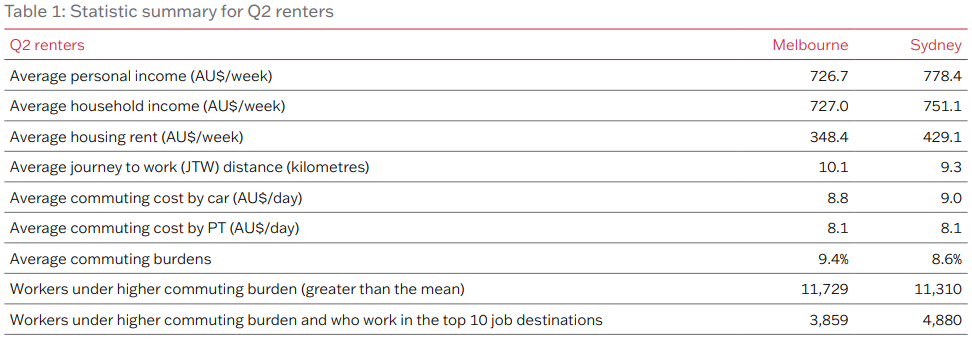
Cheaper rent often means higher commuting costs for low-income workers: report
New AHURI research examines commuting costs for low-income workers in Australian cities
14 Sep 2020
Low-income workers in Australia’s two largest cities face a trade-off between rent and commuting costs, with those who pay lower rents often spending more to travel to and from work, and vice versa, according to new research by the Australian Housing and Urban Research Institute (AHURI).
The research, ‘Commuting burden and housing affordability for low-income renters’, undertaken for AHURI by researchers from RMIT University and Monash University, examines the interactions between rents and commuting costs have on accessing employment for low income workers who are renting their home.
The research finds that low-income workers are spending a considerable percentage of their income on commuting costs – with low income workers in Sydney spending 8.6 per cent of their average income on travelling to and from work, while in Melbourne it’s almost 10 percent (9.4%).

The report also finds that low income workers in Sydney more likely to commute for work to the city’s central business district than similar workers in Melbourne.
‘We found that a high proportion of low income workers are living in lower cost rental housing located in outer and fringe suburban locations, and that their employment locations tends also to be suburbanised, often in the middle-outer zone’, says Professor Jago Dodson from RMIT University. ‘Consequently the commuting burdens on low income renters in outer and fringe zones where rental housing is cheaper are not necessarily high when the jobs in which they are employed are also located in these zones.’
‘People with lower commuting costs typically pay a higher rent for housing, and vice versa, so people trade-off the costs between housing and commuting because they often have a fixed total budget for living and transport relative to income.’
The research identifies the top 10 commuting destinations for low income workers who experienced very high commuting costs for both Sydney and Melbourne. Commuting destinations for low income renters in Sydney is highly centralised in the CBD and its surrounds (43.1% of low income workers) while around a third (32.9%) of low-income workers commute to central Melbourne and surround suburbs including Docklands and Richmond.
‘A great number of low income renters work in the major employment centres in each city, which implies many low income workers are skilled and therefore contribute to the productive economy of each city’, says Professor Dodson. ‘However, those who work in the higher productivity zones typically experience among the highest commuting burdens for their income group’.
The research also found there are few sites within 10 kilometres of the top 10 low-income employment locations where any new housing developments might deliver rental housing affordable to low income workers so as to help reduce the costs of commuting.
‘We modelled scenarios where densities for residential developments nearby to the top 10 employment locations were increased to 75 and 95 per cent of current densities across each city,’ says Professor Dodson. ‘If such housing was at 90 per cent of city average density and managed by a community housing provider with rents 25 per cent lower than market rates, then over 48,000 new dwellings could be available for low income workers in Melbourne and nearly 25,000 in Sydney.’
The report can be downloaded from the AHURI website at http://www.ahuri.edu.au/research/final-reports/335.
